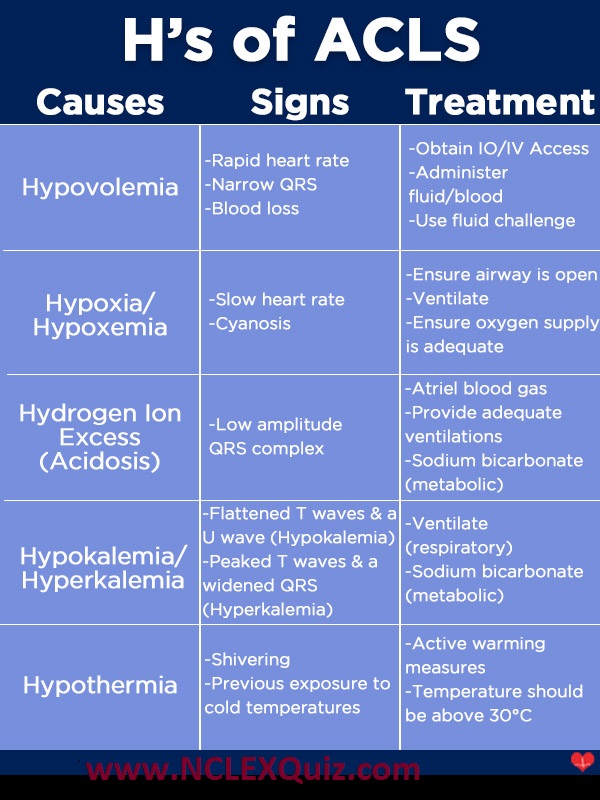What are the “H’s”?

Hypovolemia
Hypovolemia is a common cause of cardiac arrest and develops from severe fluid or blood loss. This is typically a result of excessive sweating, vomiting, traumatic blood loss, severe burns or diarrhea.
Hypoxia or Hypoxemia
Hypoxia is an insufficiency in the amount of oxygen that reaches vital organs and tissues. It can occur from several reasons, including disorders of the lungs, drowning, fires, high altitudes, chemical or gas poisonings, etc.
Hydrogen Ion Excess (or Acidosis)
Hydrogen Ion Excess, or Acidosis, is either a respiratory or metabolic emergency that can lead to cardiac arrest that occurs when there are inadequate pH levels caused by too much acid in the body. Some causes of acidosis include lung disease, C02 buildup, DKA/AKA, liver failure, cancer, etc.
Hypokalemia and Hyperkalemia
Both hypokalemia and hyperkalemia are conditions in which potassium levels are too high or low to maintain normal contraction of the myocardium. When these levels of K+ are off, the individual is at high risk for cardiac arrest. A few causes of hypokalemia and hyperkalemia include use of diuretics, excessive vomiting, DKA, and kidney disease or failure. Hyperkalemia may be caused by diabetes, kidney disease or as a side effect of certain drugs.
Hypothermia
Hypothermia occurs when the body cannot keep itself warm and the core temperature drops below 30 degrees Celsius. Hypothermia can lead to cardiac arrest because cardiac output is decreased. Hypothermia ensues when an individual is exposed to extreme and/or extended exposure to cold weather or water temperatures.